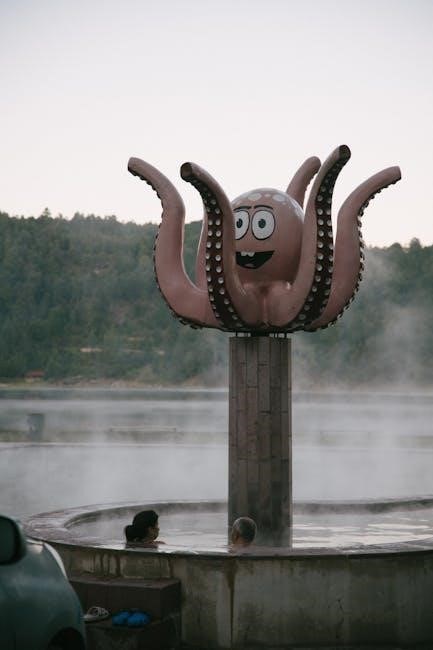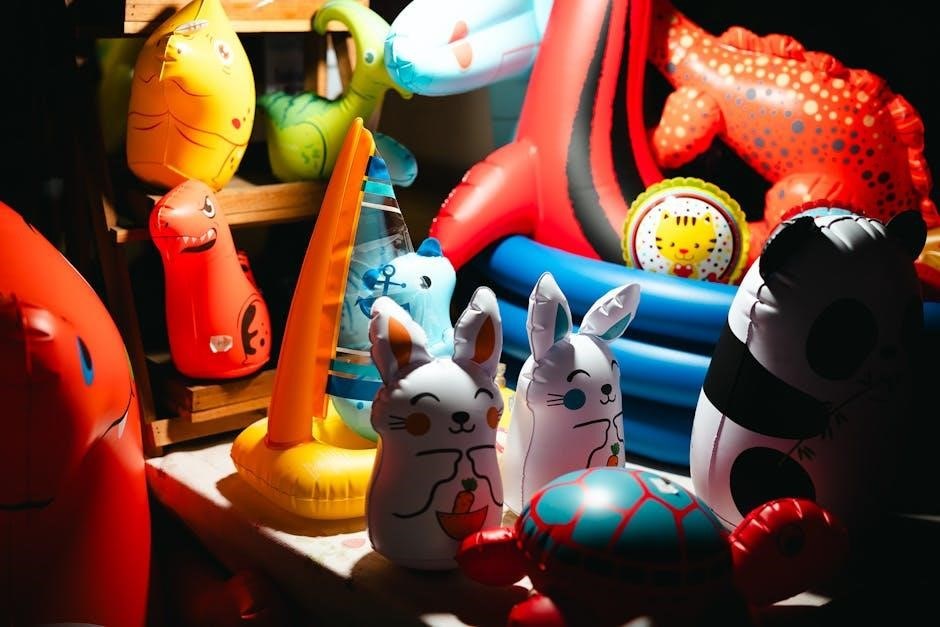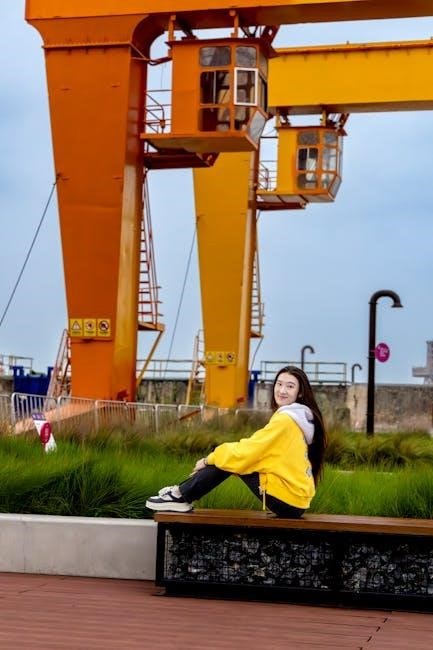
G8 political cartoons serve as a visual commentary on global issues, using satire and metaphors to simplify complex political matters for public engagement and reflection․
1․1 Definition and Purpose of G8 Political Cartoons
G8 political cartoons are visual commentaries that critique and interpret key issues addressed during G8 summits, using satire and metaphors to convey complex political messages․ Their primary purpose is to engage the public by simplifying intricate global matters, such as economic crises or tax evasion, into relatable visuals․ These cartoons often highlight power dynamics among member nations and the challenges of global cooperation․ By employing humor and symbolism, they aim to provoke thought, spark debates, and influence public opinion․ For instance, the “Recession Pool” cartoon by Michael Kountouris effectively captures the essence of economic instability during the 2008 crisis․ Such works serve as a bridge between policymakers and the general populace, making G8 summits more accessible and understandable to a broader audience․
1․2 The Role of Satire in G8 Summits
Satire plays a pivotal role in G8 political cartoons by critiquing the summits’ agendas and outcomes through humor and irony․ It simplifies complex geopolitical issues, making them accessible to a wider audience․ Cartoons often exaggerate the actions and policies of G8 leaders, highlighting contradictions or hypocrisies in their decisions․ For example, Stuart Carlson’s cartoon from the Milwaukee Journal-Sentinel uses satire to critique economic policies during the 2005 summit․ The pool metaphor, as seen in Michael Kountouris’ “Recession Pool,” symbolizes economic instability, using humor to address serious crises․ Satire also humanizes leaders, portraying them in relatable scenarios that spark public debate․ By blending wit with critique, these cartoons encourage engagement and reflection on global challenges․

Historical Context of G8 Summits in Cartoons
G8 cartoons historically depict summits through symbolic imagery, reflecting global challenges and power dynamics, with the pool metaphor representing economic instability and political tensions․
2․1 Early Depictions of G8 Meetings
Early G8 cartoons often used metaphors to represent complex economic and political issues, with the pool symbolizing global instability and unity․ Stuart Carlson’s 2005 cartoon from the Milwaukee Journal-Sentinel depicted G8 leaders in a pool, reflecting economic challenges․ This imagery highlighted the collective effort to address crises while showcasing power imbalances․ The pool metaphor became a recurring theme, symbolizing both collaboration and tension․ Early depictions also focused on the exclusivity of the G8, portraying it as a club for wealthy nations․ These cartoons simplified intricate global issues, making them relatable to the public․ Satire played a key role in critiquing policies and sparking dialogue․ The historical context of these early works laid the groundwork for future cartoonists to explore G8 summits with visual storytelling․
2․2 Evolution of Cartoon Themes Over Time
Cartoon themes related to G8 summits have evolved significantly, reflecting shifting global challenges and political dynamics․ Early depictions focused on economic crises, such as the 2008 recession, often using metaphors like the “Recession Pool” to symbolize instability․ Over time, themes expanded to address issues like tax evasion and financial transparency, as seen in post-2013 G8 agreements․ Cartoons began incorporating more overt criticism of power imbalances among member nations and the exclusion of developing countries․ The pool metaphor persisted but gained new layers, such as depicting leaders struggling to stay afloat, symbolizing their efforts to manage global instability․ Recent cartoons highlight contemporary issues like inequality and climate change, showing how G8 summits remain a focal point for visual political commentary․ This evolution underscores the adaptability of political cartoons in addressing pressing global concerns․

Key Themes in G8 Political Cartoons
G8 political cartoons highlight economic crises, tax evasion, and power imbalances, using metaphors to critique global policies and the interests of member nations․
3․1 Economic Crises and Global Recession
Economic crises and global recession are recurring themes in G8 political cartoons, often depicted through metaphors like sinking ships or drowning leaders․ These visuals symbolize the instability of global markets and the struggles of nations to stay afloat during economic downturns․ For instance, the 2008 global financial crisis and the eurozone crisis were frequently illustrated, with cartoons highlighting the fragility of economic systems․ The use of pools as a symbol, as seen in Michael Kountouris’ “Recession Pool,” represents the depth and complexity of economic challenges․ Such imagery not only critiques the policies of G8 nations but also serves as a reminder of the interconnected nature of global economies․ By simplifying complex issues, these cartoons make economic crises more accessible to the public, fostering awareness and debate․
3․2 Tax Evasion and Financial Transparency
Tax evasion and financial transparency are central themes in G8 political cartoons, often portrayed through imagery of hidden wealth and masked identities․ These visuals critique the secretive practices of corporations and individuals, highlighting the gap between public rhetoric and actual accountability․ Cartoons frequently depict G8 nations as wealthy elites, emphasizing their focus on protecting economic interests rather than addressing global inequality․ For instance, the 2013 G8 summit’s agreement on combating tax evasion was met with skepticism, reflected in cartoons showing leaders hiding behind financial loopholes․ Such illustrations underscore the public’s distrust in the transparency of global financial systems․ By using metaphors like locked safes or hidden money, these cartoons simplify complex financial issues, making them relatable and sparking conversations about fairness and accountability in the global economy․
3․3 Power Dynamics Among G8 Nations
G8 political cartoons often highlight the power imbalances among member nations, using visual metaphors to represent dominance and influence․ Wealthier nations are frequently depicted as overshadowing smaller or less economically powerful countries, emphasizing the disparity in decision-making․ For instance, cartoons may portray the United States or Germany as central figures, while other nations are relegated to the periphery․ These visuals critique the dominance of a few nations in setting the global agenda, often at the expense of developing countries․ The exclusion of non-G8 nations from key discussions is another common theme, depicted through imagery of closed doors or exclusive clubs․ Such cartoons underscore the public’s perception of the G8 as a forum for the powerful, raising questions about the fairness and inclusivity of global governance․ These depictions serve as a commentary on the unequal distribution of power in international diplomacy․
Symbolism and Metaphors in G8 Cartoons
G8 cartoons employ symbolic imagery, such as pools, to represent economic challenges and global instability, offering a visual shorthand for complex political and financial themes․
4․1 The Use of Pools as a Symbol
Pools in G8 political cartoons often symbolize economic instability and global challenges․ For instance, Michael Kountouris’ “Recession Pool” cartoon depicted G8 leaders swimming in a pool labeled “recession,” highlighting the economic crises faced during the eurozone crisis discussed at the G8 summit․ The pool metaphor serves as a visual representation of the deepening economic struggles, where leaders are portrayed as struggling to stay afloat․ This imagery critiques the perceived inability of G8 nations to effectively address global financial instability․ By using the pool as a central motif, cartoonists emphasize the shared yet overwhelming nature of economic challenges, making complex issues more relatable to the public․ This symbolic approach underscores the dual role of cartoons: to entertain and to provoke critical reflection on pressing global issues․
4․2 Representations of Economic Stability
G8 political cartoons often use symbolic imagery to represent economic stability, contrasting it with themes of crisis․ For example, Stuart Carlson’s work in the Milwaukee Journal-Sentinel depicted G8 leaders navigating economic challenges, with stability symbolized by steady structures or balanced scales․ These visuals contrast with the chaos of “Recession Pool” by Michael Kountouris, where instability is central․ Cartoonists employ metaphors like solid ground or calm waters to illustrate economic stability, emphasizing the G8’s role in maintaining global financial order․ Such representations highlight the delicate balance between prosperity and crisis, offering a visual narrative of economic health․ By juxtaposing stability with instability, these cartoons provide a powerful commentary on the G8’s impact on the global economy and its ability to address financial challenges․

Notable G8 Political Cartoons
Stuart Carlson, Michael Kountouris, and Frederick Deligne created iconic G8 cartoons, highlighting global issues like economic crises and power dynamics through satirical and symbolic imagery․
5․1 Stuart Carlson’s Cartoon from the Milwaukee Journal-Sentinel
Stuart Carlson’s 2005 cartoon from the Milwaukee Journal-Sentinel is a seminal work in G8 political cartooning․ It vividly depicts G8 leaders lounging by a pool, symbolizing their detachment from global crises․ The pool metaphor represents luxury and complacency, contrasting sharply with the struggles of the global economy․ Carlson’s satire critiques the perceived priorities of G8 nations, highlighting their focus on maintaining power and wealth over addressing widespread economic inequality․ The cartoon gained significant attention for its bold imagery and sharp commentary, sparking discussions about the role of G8 summits in addressing global challenges․ Carlson’s work remains a powerful example of how political cartoons can provoke thought and dialogue on pressing international issues․
5․2 Michael Kountouris’ “Recession Pool” Cartoon
Michael Kountouris’ “Recession Pool” cartoon is a striking visual critique of the G8’s response to the global economic crisis․ Created during the eurozone crisis, the cartoon depicts G8 leaders lounging in a pool, symbolizing their perceived detachment from the economic turmoil․ The pool serves as a metaphor for luxury and complacency, contrasting with the struggles of ordinary citizens․ Kountouris’ work highlights the gap between the elite’s priorities and the realities of global recession․ The imagery is both humorous and biting, effectively conveying the public’s frustration with the lack of tangible solutions․ This cartoon is celebrated for its ability to simplify complex economic issues, making them accessible to a broader audience and fostering critical dialogue about the G8’s role in addressing global challenges․
5․3 Frederick Deligne’s Cartoon on Labour and Capital

Frederick Deligne’s cartoon on labour and capital offers a critical perspective on economic inequality and the exploitation of labor, themes often linked to G8 discussions․ Created in 1896, the cartoon depicts labor as a burden carried by wealthy elites, highlighting the stark divide between capital and workforce․ While not directly tied to a specific G8 summit, the piece resonates with the group’s historical focus on economic policies and their impact on global labor markets․ Deligne’s work underscores the enduring relevance of labor rights in political discourse, echoing the G8’s later efforts to address global tax evasion and financial transparency․ The cartoon’s timeless message aligns with the G8’s broader agenda, making it a poignant reflection of systemic economic imbalances․
The Impact of G8 Cartoons on Public Discourse
G8 political cartoons prompt debates on global issues, fostering awareness and encouraging citizens to engage with economic and political challenges addressed by the G8 summits․
6․1 Sparking Conversations About Global Issues

G8 political cartoons effectively spark conversations about global issues by using vivid imagery and satire to highlight pressing concerns․ The pool metaphor, as seen in Michael Kountouris’ “Recession Pool,” symbolizes economic challenges, making complex topics relatable․ These visuals capture public attention, encouraging dialogue on issues like economic crises and tax evasion․ By simplifying intricate political matters, cartoons inspire critical thinking and engagement․ This leads to broader discussions, fostering awareness and encouraging individuals to explore G8 summit agendas․ The use of humor and symbolism ensures that these cartoons resonate with diverse audiences, bridging the gap between policymakers and the public․ Ultimately, they play a crucial role in shaping public discourse, ensuring global issues remain relevant and accessible to all․
6․2 Influence on Media and Public Perception

G8 political cartoons significantly influence media narratives and public perception by providing visual critiques of global policies and summits․ The use of metaphors, such as the “Recession Pool” by Michael Kountouris, simplifies complex economic issues, making them more accessible to the general public․ These cartoons often amplify media coverage, shaping how audiences interpret G8 agendas and decisions․ By highlighting disparities in power dynamics and economic priorities, they challenge viewers to question the role of G8 nations in addressing global crises․ This visual commentary not only reflects public sentiment but also molds it, ensuring that critical issues remain in the spotlight․ As a result, G8 cartoons become a powerful tool for influencing both media discourse and broader societal understanding of international relations․
The Legacy of G8 Political Cartoons

G8 political cartoons leave a lasting legacy by preserving historical context and inspiring future cartoonists, while influencing public discourse on global issues and policies effectively․
7․1 Preserving Historical Context

G8 political cartoons act as visual archives, capturing the essence of historical moments tied to global summits and economic crises․ They provide a snapshot of the socio-political climate during specific G8 meetings, such as the 2005 summit in the U․S․, where issues like global recession dominated discussions․ Cartoons like Michael Kountouris’ “Recession Pool” symbolize the economic downturns and their impact on global stability, offering a visual narrative of events․ These works are preserved in digital and print archives, serving as educational tools for understanding past policies and their implications․ By depicting leaders and their actions, they highlight power dynamics and international relations, making them invaluable for historians and researchers studying global governance and economic trends․ Thus, G8 cartoons ensure that historical context remains accessible and engaging for future generations․
7․2 Inspiring Future generations of Cartoonists
G8 political cartoons have become a cornerstone for aspiring cartoonists, offering a rich tapestry of satire, symbolism, and storytelling․ Works like Stuart Carlson’s 2005 cartoon and Michael Kountouris’ “Recession Pool” showcase how visual narratives can convey complex political themes․ These pieces inspire young artists to explore global issues through art, blending humor with critique․ The use of metaphors, such as pools symbolizing economic instability, teaches cartoonists how to simplify intricate topics․ Archives of G8 cartoons serve as educational resources, encouraging new generations to engage with politics creatively․ By studying these works, future cartoonists can learn to craft impactful, thought-provoking art that resonates with a broad audience․ This legacy ensures that political cartooning remains a vibrant medium for addressing global challenges and fostering dialogue․
G8 political cartoons effectively address global issues through satire, fostering dialogue, influencing public perception, and leaving a lasting legacy in political discourse, cartooning art, and public engagement․
8․1 Summary of Key Points
G8 political cartoons are powerful tools that use satire and metaphors, like the “Recession Pool,” to simplify complex global issues for public engagement․ They highlight themes such as economic crises, tax evasion, and power dynamics among nations․ Cartoons like Stuart Carlson’s from the Milwaukee Journal-Sentinel and Michael Kountouris’ “Recession Pool” illustrate economic instability and global recession․ These works spark conversations about inequality, financial transparency, and the impact of G8 policies․ By preserving historical context, they serve as a visual archive of global challenges and inspire future cartoonists to address contemporary issues․ The legacy of G8 cartoons lies in their ability to influence media, shape public perception, and foster dialogue on critical topics, ensuring their relevance in political discourse and artistic expression․

8․2 Final Thoughts on the Significance of G8 Cartoons
G8 political cartoons are more than just visual humor; they are powerful tools for political communication and education․ By simplifying complex issues like economic crises and tax evasion, they make global politics accessible to a broader audience․ The use of metaphors, such as the “Recession Pool,” engages viewers and provokes critical thinking․ These cartoons not only reflect public sentiment but also shape it, influencing media narratives and policy debates․ Their ability to preserve historical context ensures that future generations can understand past challenges․ Ultimately, G8 cartoons demonstrate the enduring value of satire in addressing serious issues, making them a vital part of both artistic expression and political discourse․





